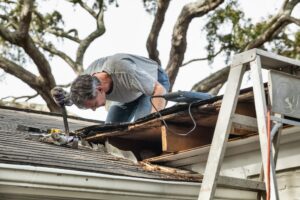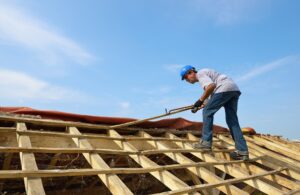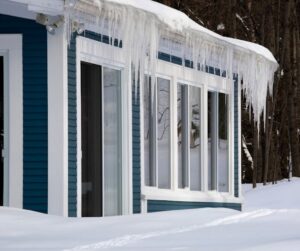If you plan to install a new roof on your home soon, then you should learn about all of your roof material options. One option relatively new to the market compared to other roof materials is the composite shingle. Unlike asphalt shingles of fiberglass or cellulose mats topped with asphalt and mineral granules, composite shingles all vary in composition. However, most have a mixture of various types of rubber, plastic, cellulose dust, or mineral dust.
Most composite shingles mimic the appearance of other more costly or less durable roof materials, such as natural slate tiles or wooden shakes. When you opt for composite shingles instead of these roof materials, you can look forward to a roof that has great curb appeal yet is much more durable, low-maintenance, and affordable than roofs of natural materials.
Learn three additional reasons to consider adding a composite shingle roof to your home.
1. Eco-Friendly
If you think that all-natural roof materials are more eco-friendly than shingles of synthetic materials, then you may be surprised to hear that many composite shingles are more environmentally friendly than their natural alternatives.
For example, most wood roof shakes and shingles are from old-growth western cedarwood. This wood type is not a sustainable resource, which makes the harvesting of it not an environmentally friendly practice. In addition, while natural slate is a relatively eco-friendly roof material, slate mining and the transport of this super-heavy material both require extensive energy use that can contribute to environmental pollution.
On the other hand, composite shingles are from recycled materials, post-consumer waste, and industrial waste. That means that no new materials need harvesting or mining to create these roof materials. In addition, composite shingles are very lightweight and easy to ship with the use of little energy. these shingles can be recycled when they reach the end of their lifespans.
2. Durable
Natural roof materials vary in durability. Natural wood shakes need frequent maintenance to protect them from wood rot, extensive moss growth, and the growth of mildew and algae and have low fire-resistance ratings.
Natural slate tiles can crack when walked on, and some thinner tiles have Class 3 impact-resistance ratings, which means they can crack when hit with hail or flying debris more easily than roof materials with Class 4 impact-resistance ratings.
Most composite shingles, on the other hand, are very resistant to hail damage due to their Class 4 impact-resistance ratings and can be walked on without cracking or splitting. This shingle type also typically has a Class A fire-resistance rating, which is a rating given to only the most fire-resistant roof materials on the market. In fact, many composite roof shingles are so durable that their manufacturers offer 50-year product warranties.
3. Lightweight
Lightweight roof materials offer many advantages compared to materials heavy in weight. First, many older homes cannot support the weight of extremely heavy roof types, such as thick slate tiles, and need to have additional structural reinforcements before a heavy roof type is added.
In addition, very heavy roofs are more prone to collapsing during a house fire than those of more lightweight materials. Finally, lightweight roofs are typically quicker and easier to install than heavier ones, leading to more affordable installation costs.
Composite shingles are very light in weight. Synthetic slate shingles are only one-quarter of the weight of natural slate tiles, and most are even lighter in weight than traditional asphalt shingles.
Every homeowner should also consider installation of composite roof shingles that offer the curb appeal of natural roof materials without the disadvantages of these natural roof types. Contact the roof experts at Precise Roofing & Contracting to schedule composite shingle roof installation today.





